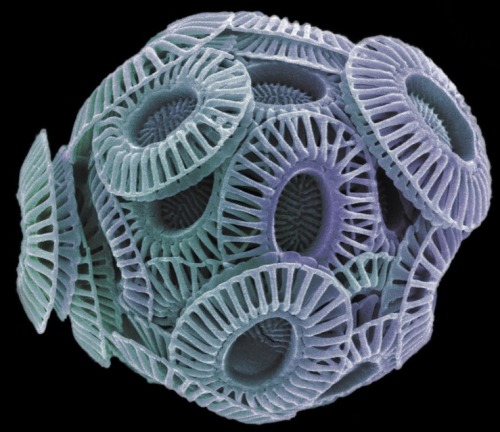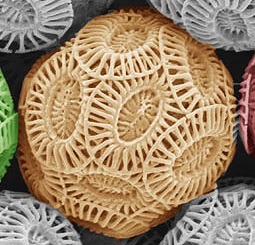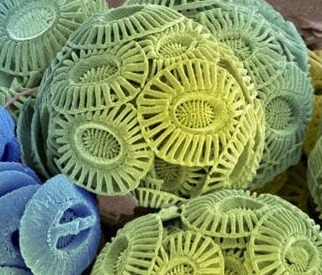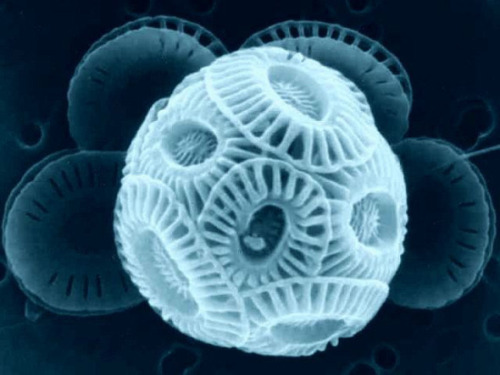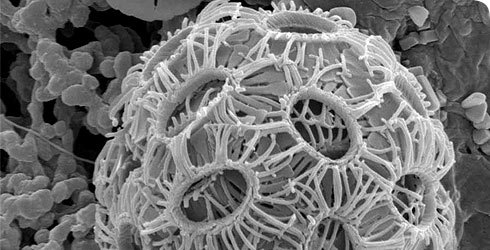mucholderthen:The Phytoplankton Emiliania huxleyi Coccospheres up close and personalIMAGES: Natural
mucholderthen:The Phytoplankton Emiliania huxleyi Coccospheres up close and personalIMAGES: Natural History Museum, BBC, Rutgers/Woods HoleLike other coccolithophores, Emiliania huxleyi is a single-celled phytoplankton covered with uniquely ornamented calcite disks called coccoliths (also informally known as liths or scales). [WP]It is one of the youngest species on Earth, appearing only around 250,000 years ago, about the same time as Homo sapiens.E. huxleyi has a global population of about 7 x 1022 cells scattered across the world ocean and adapted to a wide range of environments.It can grow explosively to produce massive blooms of milky water detectable from space.It has a Cheshire Cat-like ability to escape from trouble by changing form.[Source: Natural History Museum, London]BOTTOM IMAGE: Scanning electron microscope image of a partially dissolved Emiliania huxleyi coccosphereOcean acidification poses a potential threat to all marine organisms which produce calcareous skeletons.Burning of fossil fuels and deforestation is releasing immense volumes of carbon dioxide into the atmosphere, and around 25% is then dissolved into the sea. This is shifting the chemistry of sea water, making it slightly more acidic and making calcification more difficult. [NHM] -- source link
Tumblr Blog : mucholderthen.tumblr.com
#long post#ocean chat#plankton#coccolithophores
